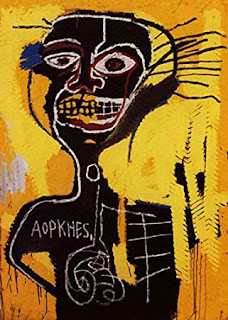 |
| Isotta Brembati, ca. 1555-56 |
exhibition in North America devoted to his work in an exhibition through June 2, 2019.
Bringing together nearly two dozen of Moroni's most arresting and best known portraits introduces his masterful illusion of recording reality. Instead Moroni captured the realistic image of the sitter with no attempt to glorify or improve upon the figure.
The arrogant men, the subdued obedient women peer out with innocent eyes devoid of any emotion. A masterful realist, Moroni may never have achieved the fame of other artists working at the time, however, his recognition for realism stands as a testament to his genius.
Although less familiar to audiences outside of Italy, Moroni is celebrated as an essential figure in the Northern Italian tradition of naturalistic painting that includes Leonardo da Vinci and Carracci. Known for his naturalism Moroni presents wealthy citizens of Bergamo in their elegant attire alongside a selection of complimentary objects, including Renaissance jewelry, textiles, arms and armor, and other luxury items. Image: Isotta Brembati. oil on canvas, ca. 1555-56, Fondazione Museo de Palazzo Moroni, Bergano, Lucretia Moroni Collection.
Moroni's naturalism was sometimes criticized, yet the historian, Roberto Longhi, for example in 1953 praised Moroni's "documents" of society and placing the artist at the head of a tradition of Lombardy naturalism that anticipated Caravaggio.
 |
| The Knight with the Wounded Foot |
Moroni achieved his characteristic naturalism through exacting attention to detail, psychologically potent and vivid expressions, with a 'warts and all" approach that at times, resulted in seemingly unidealized portrayals. His realistic portrayal of Lucrezia Agliardi Vertova conveys with emphatic clarity his elderly sitter's goiter, her sagging neck, wrinkled skin. At the same time, she is dignified.
Moroni's most famous painting, The Tailor, is unusual for its portrayal of a tradesman at work, albeit probably a wealthy one. It has impressed viewers for centuries with its life likeness
and suspended action.
In 1660, Marco Boschini, in his celebrated poem about Venetian painting, La carta del navegar pittoresco, proclaims Moroni's Tailor is so lifelike that it seems able to speak "more eloquently than a lawyer." Paintings like The Tailor were ahead of their time and anticipated the narrative portraits for which Rembrandt would be celebrated the following century. Nearly by the portrait of The Tailor, viewers can see in a separate glass case, large metal scissors the tool of the tailor's trade, similar to the one in the portrait.
 |
| The Tailor |
"cloth-cutter.") Based on the sitter's clothing---fashionable and costly (though made of wool rather than the more expensive silk) the painting most likely depicts a well-to-do tailor. LUXURY ITEMS in the exhibit includ, Isotta Brembati's fan, pendant cross of rubies, emerald and pearls, and marten fur which are rare surviving objects in the exhibition. Though marten furs were highly popular among elite women during the Italian Renaissance, very few have survived. The extraordinary example on display is the only one with a gold marten head with precious stones and enamel underscores the opulence of the accessory as well as its duality, being at one time beautiful yet grotesque. Website: www.frickfuture.org. For additional information 212-288-0700.
Ta Ta Darlings!!! Moroni's paintings and objects bring to life a Renaissance society
and its opulent lifestyle. Fan mail welcome at pollytalknyc@gmail.com.
Fan mail always welcome just go to www.pollytalk.com and click and link in the left hand column to Blogs on fashion, visionary men, women determined to succeed and poetry.
.









